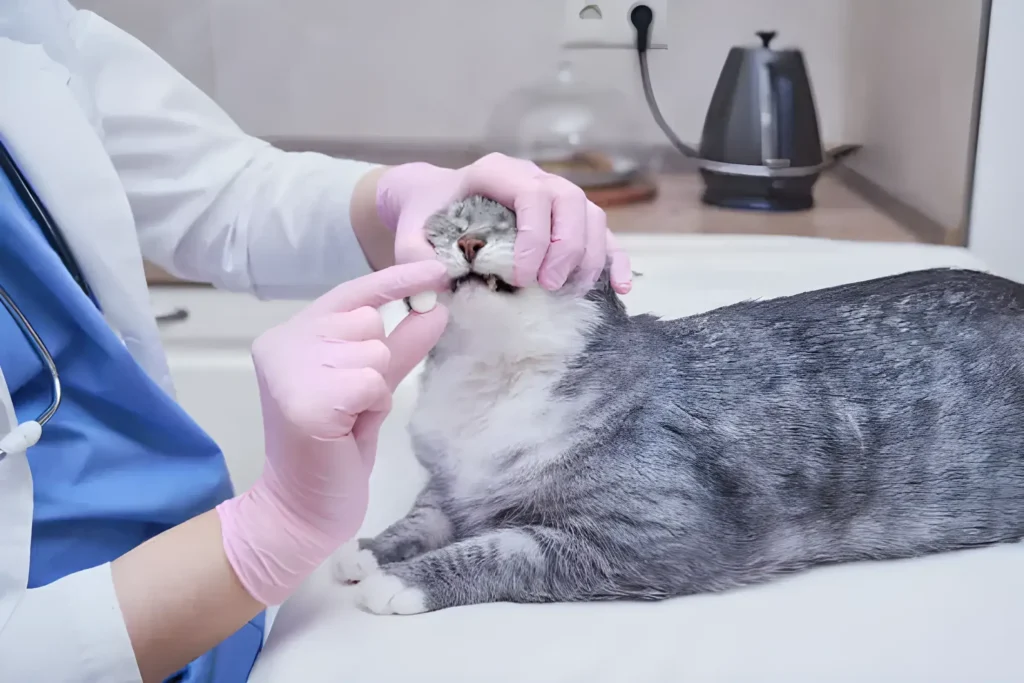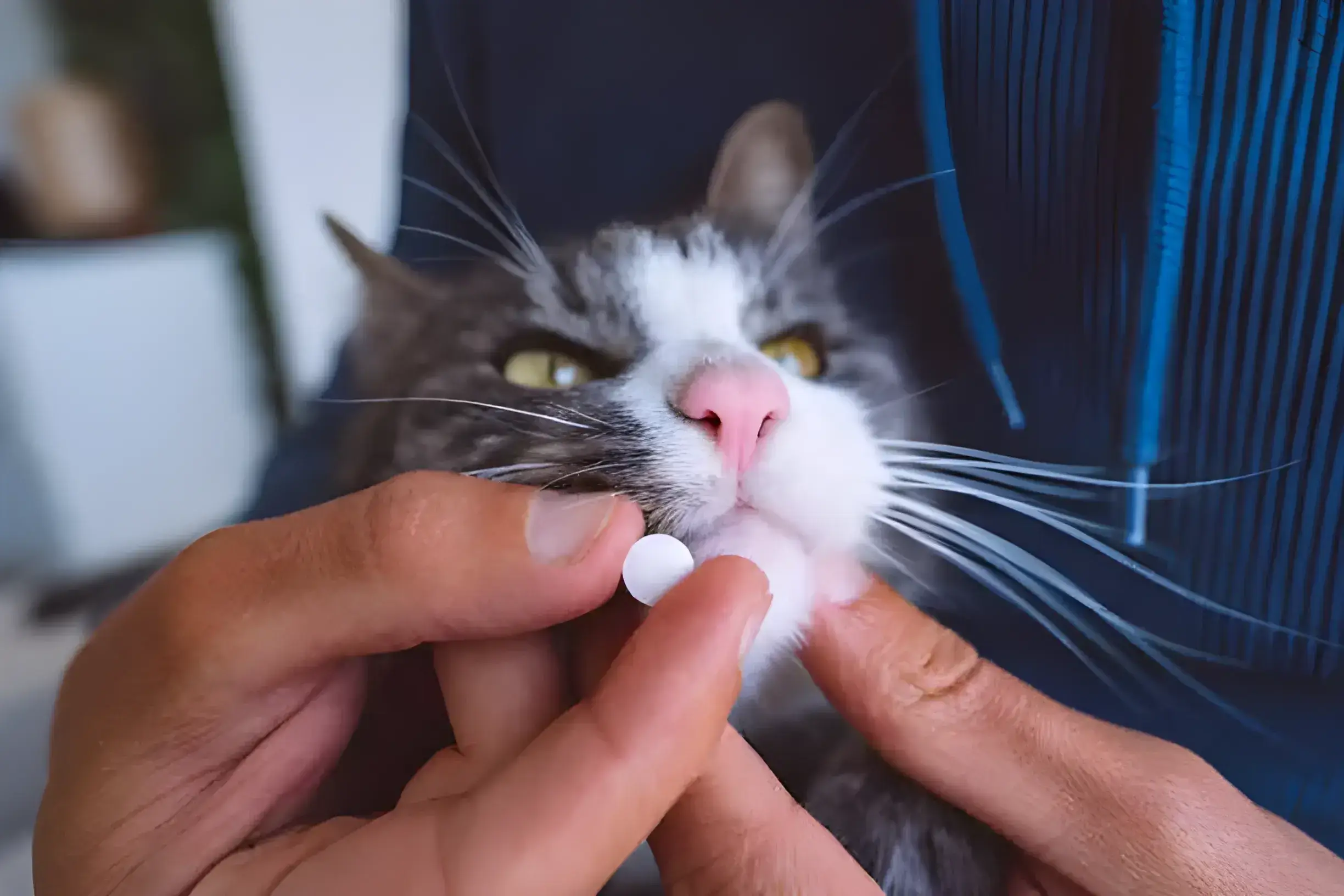The easiest way to get your cat to take a pill is to hide it in a tasty treat. If that doesn’t work, you’ll need to gently restrain your cat and place the pill at the back of their throat. Always follow up with a bit of water or food to help the pill go down.
Let’s face it, giving a pill to your feline friend isn’t always a purr-fectly easy task. But with the right techniques and a little patience, you can make this process a bit less stressful for both of you.
Getting Ready: The Key to Success
Find a Calm Time: Choose a time of day when your cat naturally feels relaxed. Avoid trying to give medication right after playtime or if they seem stressed by something in their environment.
Prep Your Tools: Gather everything beforehand: the pill itself, any treats for disguising it, a small syringe or eyedropper filled with water, and a towel if you may need to wrap your cat for extra restraint.
Keep Yourself Calm: Cats are incredibly sensitive to our emotions. If you’re stressed, they’ll be too. Take a few deep breaths, relax your body, and approach the situation with confidence.
Disguise and Conquer: The Sneaky Approach
Treat Time! Try hiding the pill inside a small portion of their favorite wet food, a bit of tuna, or special treats like Pill Pockets that are made just for this.
Flavor Boost: Coat the pill in a tiny bit of butter, gravy from their food, or another flavor they truly can’t resist.
Crushing (With Vet Approval): Before trying this, always ask your veterinarian if the specific pill can be safely crushed and sprinkled into food.
If Treats Don’t Work: Direct Pilling
Video Demonstration:
Secure Your Cat: Gently but firmly hold your cat on a table or countertop. If they’re particularly wiggly, enlist a helper or try the “kitty burrito” technique by wrapping them snugly in a towel.
Open the Mouth: Tilt their head back slightly. Use your thumb and forefinger to gently open the lower jaw. Never place your fingers over the sharp canine teeth.
Place the Pill: Using your other hand, place the pill as far back on the tongue as possible.
Close and Encourage Swallowing: Hold their mouth closed gently. Stroke their throat or lightly blow on their nose to stimulate a swallow reflex.
Follow with Water: Give a small amount of water from a syringe or offer a favorite snack to help the pill go down smoothly.
Why Won’t My Cat Take the Pill?
There are several reasons why your cat might resist taking a pill:
Taste Aversion: Some medications have a bitter taste that cats dislike.
Negative Association: If pilling has been a stressful experience in the past, your cat may associate it with something unpleasant.
Difficulty Swallowing: Older cats or those with dental problems might have trouble swallowing pills whole.
Understanding the reason for your cat’s resistance can help you choose the most effective approach.
What to Do if Your Cat is Super Resistant

Ask Your Vet: They may demonstrate techniques or offer alternatives like liquid medication if possible.
Pill Piller: A pill piller is a syringe-like device that helps deposit the pill further back in the mouth safely.
Be Persistent (But Gentle): Don’t give up after one try. Practice gentle handling and positive reinforcement to create a less stressful experience for your cat.
Alternatives to Pills
If pilling seems impossible, discuss these options with your veterinarian:
Liquid Medication: Some medications come in a liquid form that can be easier to administer orally or mixed with food.
Flavored Compounds: Certain medications may be available in flavored compounds that are more palatable to cats.
Injectable Forms: For specific medications, injections might be a viable alternative, especially for long-term treatment.
Additional Tips
Practice makes Perfect: Practice handling your cat’s mouth without pilling to desensitize them.
Reward, Reward, Reward: Always give praise and treats (if the pill allows) after a successful pilling.
Keep it Short: Don’t prolong the struggle to avoid traumatizing your cat. If it’s not working, take a break and try again later.
Vet Approved! Always check with your veterinarian before giving your cat any medication for the first time. They’ll make sure you have the correct dosage and help if you think your cat is having a negative reaction to the medication.
Conclusion
Pilling your cat may take some trial and error, but with the right approach and patience, you’ll get the hang of it. Remember, your vet is your ally in ensuring your cat gets the medication they need.
The photo featured below the post headline is Credit: Daria Kulkova/istockphoto
I hope you find this post helpful and informative. If Yes’ feel free to share it with your friends!
Frequently Asked Question
My cat spits out the pill every time. What can I do?
Be persistent but try different treat disguises and placement of the pill further back on their tongue. If that doesn’t work, consult with your veterinarian.
Can I just put the pill in their food bowl?
This isn’t recommended. Cats might eat around the pill or become wary of their food if they discover the medication.
Is there a tool to help?
Yes, a pill piller can be a helpful tool, especially with very resistant cats. Ask your veterinarian to demonstrate how to use one.
How long after pilling can my cat eat?
You can offer food or treats immediately after pilling to help the pill go down completely.
Can I crush the pill and mix it with food?
Only do this if your veterinarian has explicitly said the medication can be crushed. Some pills have special coatings or are time-release and crushing them can be harmful.
My cat foams at the mouth after pilling. Is this normal?
Some cats salivate or foam a bit if the pill is bitter. If this persists for more than a few minutes or your cat seems distressed, contact your vet.
Can I give my cat human medication?
Absolutely not! Never give your cat any medication, even over-the-counter ones, meant for humans without consulting your vet first.
My cat is on long-term medication. Are there easier alternatives to pilling?
Discuss options with your vet. Some medications come in liquid, flavored compounds, or even transdermal (absorbed through the skin) forms.
My cat bites and scratches when I try to give them a pill. How can I do it safely?
Start with short “practice” sessions where you just handle their mouth without a pill. Use treats as rewards. Consider the towel-wrapping method for extra security, or ask your vet for help.
My cat seems unwell after I gave them the pill. What should I do?
Immediately stop giving any further doses of the medication and contact your veterinarian as soon as possible. Be ready to explain any changes you’ve noticed in your cat’s behavior, eating habits, or anything else that seems out of the ordinary.
My elderly cat has trouble swallowing pills. What are my options?
Ask your veterinarian if the medication is available in liquid form, or if crushing is allowed. They might also have tips on pilling cats with swallowing difficulties.
How do I pill a feral or semi-feral cat?
Pilling a feral cat requires special techniques and precautions. Consult with a veterinarian or a cat rescue group experienced with feral cats for guidance.

